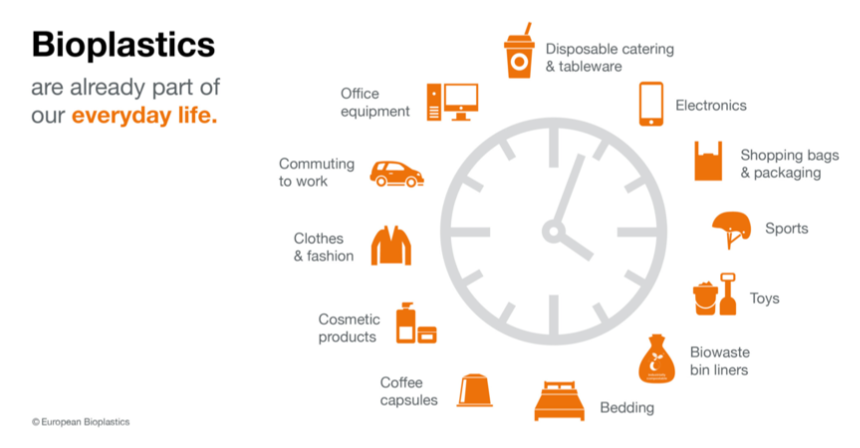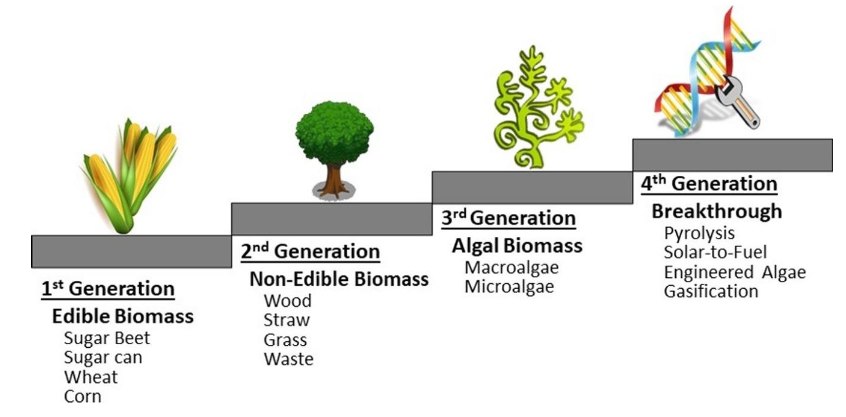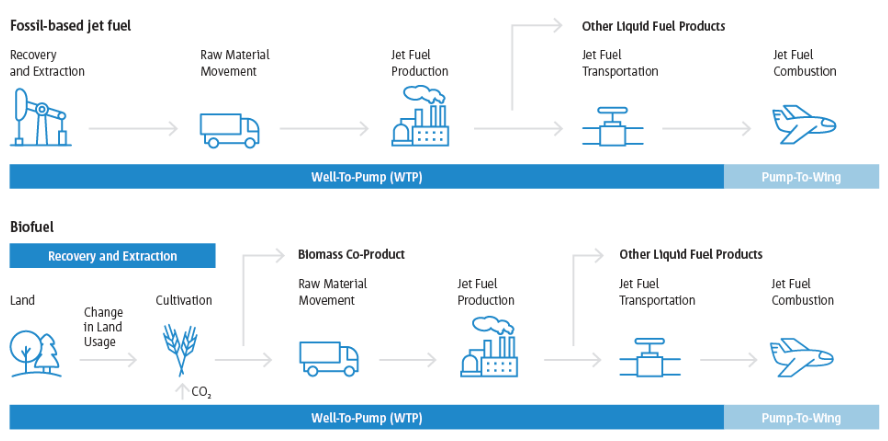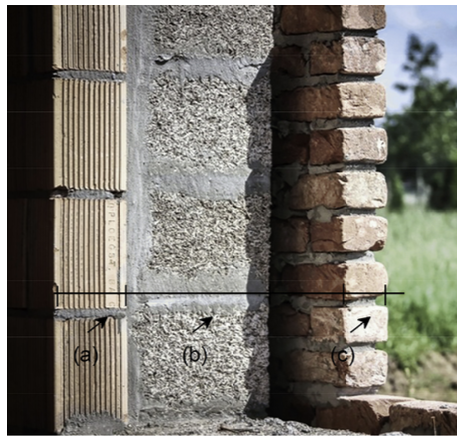4Revsピックアップ
2023年11月20日
バイオマテリアル: サステナブルな製品設計の機会と課題

要旨
バイオマテリアルは、循環型経済シフトの最前線に登場しつつある。バイオマテリアル(バイオベース材料)とは、綿、絹、木材など植物由来の原材料を指し、包装、衣服、家具など、私たちの日常生活で一般的に利用されている。しかし近年、特にプラスチック製造において、化石由来材料の代替品としてバイオ材料を活用する動きが顕著になっている。サステイナブル・バイオマテリアル」と呼ばれるこの素材は、特定の種類のバイオプラスチックの製造に貢献し、従来の石油由来素材からの革新的なシフトを示す。生物に由来するバイオマテリアルは、再生可能で、生分解性があり、環境に優しい特性を持っている。初期段階の革新的な素材はいずれも、従来のものと比べて持続可能性が向上していることを示しているが、重要な課題が残されている。それは、持続可能性への焦点を失うことなく、これらの革新的な素材をニッチで局所的なソリューションから世界的に受け入れられる標準へと移行させることである。
バイオマテリアルは、バイオマス生産による炭素隔離、製造の改善によるエネルギー効率、環境負荷の低減、生分解性など、さまざまな点で環境にメリットをもたらす。しかし、持続可能性の課題に対する特効薬としてバイオマテリアルを受け入れる前に、これらの未来の材料がどのように環境に役立ち、あるいは害を及ぼすかを理解することが重要である。このケースは、バイオプラスチック、バイオ燃料(または持続可能な航空燃料)、コンクリートの代替品など、最も人気のあるバイオ素材のいくつかを通して、様々な産業におけるバイオ素材の利点と限界を探るものである。
 </img
</img
メインハイライト
現代世界は、循環型経済のコンセプトに沿った持続可能な代替案を、あらゆる分野で熱心に模索している。バイオマテリアルは、生物に由来するため再生可能であり、有望な解決策を提供する。
バイオマテリアルは一般的に、生分解性、再生可能性、そして環境に優しい可能性を持っていると評価されています。バイオマテリアルの代表的な例としては、バイオプラスチック、バイオ燃料、コンクリート代替材料などがある。
新しいバイオマテリアルの小規模プロトタイプはどれも、従来のものよりも持続可能であることを意図している。しかし、これらのイノベーションを、地域的な解決策から世界的に認められた基準へと持続可能な形で拡大することが課題である。
バイオマテリアルは、バイオマス生産による炭素隔離、製造の改善によるエネル ギー効率、環境負荷の低減、生分解性など、さまざまな点で環境的な利点を提供 することができる。
バイオベース・ソリューションは、農業資源への依存度が高く、食糧生産との競合や水の使用量が多いため、持続不可能な場合がある。
バイオマテリアルには、従来のものよりも環境面で大きな利点をもたらすものもあれば、そうでないものもある。
製品によって機能面や環境面での利点は大きく異なるため、プロジェクトに適した製品を選択する責任はユーザーにある。
政策介入は、顧客による採用を促し、バイオマテリアルの市場での成功を左右する極めて重要な役割を果たす。
バイオマテリアルは、伝統的な産業を破壊する可能性があるため、経済的な影響を及ぼす可能性がある。その結果、雇用が失われ、労働者訓練のパラダイムシフトが必要になるかもしれない。
事例の概要
環境危機と資源枯渇に直面する現代社会は、持続可能な代替品への注目の高まりとともに、技術革新を強く求められている。このパラダイムシフトを推進する重要な枠組みのひとつが、資源を無駄なくリサイクル・再利用する循環型経済の概念です。サーキュラー・エコノミーの核心は、製品製造における資源負担を最小限に抑え、ビルド・トゥ・ラスト設計によって資源を可能な限り長く使用し続け、製品寿命が尽きた時点で材料を回収・再生することである。
バイオマテリアルは、主にその生分解性、再生可能性、そして環境に優しい可能性により、この目的の強力な味方として浮上してきた。バイオマテリアル、すなわち生きている、あるいはかつて生きていた生物に由来する材料は、有害な影響を与えることなく自然に培養され、環境に戻すことができるため、循環経済の概念に完全に合致している。しかし、加工されたバイオ素材は一貫して生分解性を示すとは限らず、ガラスや金属など他の素材との組み合わせは、リサイクルのしやすさを阻害する可能性がある。また、バイオマテリアルの生産量の増加は、天然資源に負担をかけ、農薬などの非生物学的物質への依存を助長し、環境に大きな悪影響を与える可能性がある。以下のバイオマテリアルの例を通して、このケースは様々な産業におけるバイオマテリアルの利点と限界を探る。
1. バイオプラスチック
イノベーションの最も人気のある分野の一つは、バイオプラスチックの開発である。プラスチックは、石油化学由来のものであれ、バイオベースの化学物質由来のものであれ、ポリマー鎖が結合してできたポリマーで構成されている。例えば、藻から作られたファーストフードのパッケージ、わら、植物油、コーンスターチから作られたカトラリー; おがくずから作られたプラスチックボトル、生ごみをリサイクルした苗木の鉢、さらには死んだ昆虫から作られたバイオプラスチックもある。
しばしば、グルコースのような天然物を分解可能なポリマーに変換する方法を開発する際、食料、燃料、建設、輸送に不可欠な資源と競合してしまう。これを克服するため、研究者たちは、家畜の飼料や廃棄物の分解に利用される幼虫を養殖しているクロバエの廃棄物を利用することを模索している。キチンはハエに含まれる糖ベースのポリマーで、昆虫やエビやロブスターなどの甲殻類の外骨格を強化する重要な成分であり、トンボの羽の非常に薄く透明な膜や菌類の軟組織にも含まれている。研究者たちは、ハエから抽出されたキチンは甲殻類から抽出されたものより純度が高く、魚介類アレルギーの心配が軽減されることを示唆している。セルロースに次いで2番目に多い生体高分子であるキチンは、一般に貝類産業から大量に排出される廃棄物から抽出される。このことは、バイオポリマーとそれが形成する生命システムが、効率や多様な機能性だけでなく、人体工学を凌駕する再生能力においても優れていることを強調している。
これらのプラスチックの生産工程は、原料(藻類など)の培養を通じて廃棄物の利用やCO2の吸収を伴うことがあるため、それ自体が持続可能な慣行を取り入れている。しかし、すべてのバイオプラスチックが同じというわけではない。バイオベースの原料を生産するために使用される作物の栽培、必要なモノマーを得るためのこれらの原料の抽出または発酵、そしてそれに続く重合プロセスはすべて、全体的なエネルギー必要量の一因となる。また、バイオプラスチックの加工や成形のために特殊な機械が必要なことも、生産プロセスにおけるエネルギー需要を増加させる。
しかし、欧州バイオプラスチックによる市場データ分析によると、包装がバイオプラスチックの最大の応用分野であり続け、2022年には全体の48%を占める。欧州諸国ではリサイクルインフラがしっかりしているにもかかわらず、プラスチックのリサイクル率は41.5%と推定されており、リサイクル可能なプラスチックの60%近くが廃棄されていることになる。バイオプラスチックの生産と消費の割合が急速に増加しており、これらの未来の素材がどのように環境を助けたり害したりするのかを理解することは非常に重要です。
 </img
</img
イメージ:日常生活におけるバイオプラスチックの様々な用途のイラスト。
生分解性プラスチックには、汚染されたマイクロプラスチックによる健康や環境への害を最小限に抑えるという明確な利点がある。しばしば生分解性プラスチックと同じものだと誤解されるが、バイオプラスチックは、自然環境において生分解できるかできないかの幅広い製品を包含している。
実際、バイオマス由来のプラスチックの中には、化石由来のプラスチックと同じ化学構造を持つものもあり、プラスチックの川下における廃棄物や汚染の問題に対処する役には立たない。PLAのような他のバイオプラスチックは生分解性であるが、生分解の概念は多くの人が信じているほど単純ではない。生分解性プラスチックや堆肥化可能なプラスチックは、実験室の条件で生分解することが示されているが、これは多くの場合、工業的な堆肥化システムでしか再現できない。このような廃棄物インフラは、世界の多くの地域、あるいは先進国のすべての地域でさえも利用できない可能性があり、広い地域が生分解性と生分解性のギャップを埋めることができないままになっている。
最も持続可能なバイオプラスチックの解決策のいくつかは、NotplaやFlexSeaのような企業が生産する海藻ベースのバイオプラスチックである。これらの製品は家庭で堆肥化できるように設計されており、自然条件下では4~6週間で消滅する。海藻を原料として使用することで、食料生産や他の土地利用の必要性と競合せず、淡水も必要としないため、持続可能性がさらに高まる。さらに、フレックスシーは革新的な製造プロセスを採用し、低エネルギー(押し出しベースのバイオマニュファクチャリングを利用)と、端材の利用による廃棄物ゼロを実現した。
 </img
</img
画像:海藻ベースのバイオプラスチックの使用例
プラスチック主導の世界に持続可能性の要素を持ち込む一方で、最も持続可能なバイオプラスチックでさえ、持続不可能な「使って捨てる」文化を助長している。また、使用済み製品を処理するための廃棄物管理インフラも必要となる。最良のシナリオでは、バイオプラスチックは廃棄物から作られ(水産廃棄物を原料とするマリネテックスに見られるように)、優れた代替品が存在しない状況でのみ使用され、使用後は堆肥化される。現状では、最先端の製品でさえすべての基準を満たすことができず、その使用を規制するための政策変更が必要である。
2.バイオ燃料
輸送は、世界の温室効果ガス排出量の21%を占めている。道路輸送(個人輸送と貨物輸送)は排出量の4分の3を占め、航空と海運はそれぞれ11.6%と10.6%を占めている。電気自動車は道路輸送の実現可能な代替手段を提供するが、航空と海運は長距離輸送を液体燃料に頼っている。バイオ燃料、特に持続可能な航空燃料(SAF)は、従来の化石燃料に代わる潜在的な燃料として、過去数十年にわたって大きな注目を集めてきた。植物や農業廃棄物から得られるSAFは、多くの利点と課題を持つ、石油に代わる持続可能な代替燃料と考えられています。
過去数十年にわたるSAFの革新は、効率とSAFとして適格な製品の適格性の両方を変えてきました。
第一世代から第四世代までのバイオ燃料の進歩は、より高い持続可能性と効率への旅を意味する。第一世代のバイオ燃料は、食用作物(トウモロコシなど)を原料とし、従来の発酵によってエタノールを生産していた。第二世代のバイオ燃料は、非食用作物や林業廃棄物を利用することで、食糧生産との競合を最小限に抑え、酵素プロセスを使ってセルロースをエタノールに変換する。農林廃棄物をバイオ燃料生産に利用する利点は、廃棄物が管理され、腐敗によって温室効果ガスを排出しないことである。これに対し、第3、第4世代のバイオ燃料は、藻類や自然に炭化水素を生産する特定の微生物を利用する。陸上作物に比べ、藻の培養はより多くのバイオマスを生成し、炭素回収を助け、大きな土地と淡水資源を必要とせず、これらすべてがこれらの代替燃料の環境フットプリントを劇的に改善する。藻類やその他の微生物によって生産される炭化水素もまた、資源やエネルギーを大量に消費するバイオマスの分解・処理工程をバイパスする。
 </img
</img
画像:各世代におけるバイオ燃料の進化
第4世代のバイオ燃料 カーボンニュートラル、あるいはカーボンマイナスを目指しており、それによって「持続可能な航空燃料」の基準がより高い基準を満たすよう影響を及ぼしている。これらの燃料は、ライフサイクルの炭素排出量が少ないこと、淡水の必要量が限られていること、食料生産と競合しないこと、森林破壊に寄与しないことなど、持続可能性の基準に従うことが求められている。現在、SAF製品は、80%栽培、加工、燃焼の各段階における排出量/炭素排出量を考慮すると、従来の燃料よりもライフサイクル全体で排出される炭素量が少ない。さらに、SAFは従来の燃料よりも不純物が少ないため、人体に有害な粒子状物質の排出が少ない。
 </img
</img
イメージe: 化石ベースのジェット燃料とバイオ燃料の典型的なLCAの構成要素
第4世代バイオ燃料は、化学組成が従来の燃料と似ており、純粋な代替燃料として使用できる。SAFを100%使用することで、排出量を最大94%削減できる可能性がある。
しかし、SAFは現在、新しい燃料の採用に伴うリスクを軽減するため、従来の燃料と10%から50%混合されており、 現在のモデルでは従来の燃料の需要が継続していることを示唆している。
Neste(フィンランド)、Shell(オランダ)、Gevo(米国)、Enerkem(カナダ)、Novozymes(デンマーク)、Abengoa(スペイン)、カンタス航空(オーストラリア)などなど。
しかし、スケーラビリティは、バイオ燃料の持続可能な実施における最大の課題のひとつである。藻類バイオマスが大気中の炭素を効率的に隔離するとしても、それを消費される速度で生産するためには、膨大なインフラが必要となる。
3.コンクリートの代替物
建設業界の定番であるコンクリートは、その強度、耐久性、多用途性、費用対効果で長い間称賛されてきた。これは、広く入手可能な材料を使用し、素早く固まって石のような塊になる。どんな形状の型にも流し込むことができ、多様な建築・構造設計を可能にする。また、多くのプロジェクトでは、機能や安全性を損なうことなくコンクリートの代替物を利用することができますが(非構造壁や車道など)、その費用対効果から、代替することは困難です。
しかし、コンクリート生産、特にポートランドセメント生産は、主にエネルギー集約的なセメント生産プロセスと硬化時のCO2排出により、世界排出量の約8%に責任を負っている。セメントはまた、使用済みセメントの解決策を欠いており、建設業界における循環型経済の実現を妨げている。このため、コンクリートに代わる環境に優しい代替材料を探す必要がある。
セメントの代替物は、以下の方法の1つ以上を通じて持続可能性を統合する:
資源の保護
– ジオポリマーのような代替材料は、従来のセメントよりも石灰石やその他の天然資源を必要としない。これは、これらの資源を節約し、その採取による環境への影響を軽減する。ジオポリマーは、従来のコンクリートに匹敵する、あるいはそれ以上の強度と耐久性を提供することができる。
廃棄物の利用
– 廃棄物をレシピに組み込むことで、代替コンクリートの中には他の産業からの廃棄物を利用し、埋立地から廃棄物を流用できるものもある。例えば、石炭燃焼の副産物であるフライアッシュや、鉄鋼生産の副産物であるスラグなどである。これらの材料を使用することで、廃棄物を削減し、バージン材料を抽出する際の環境フットプリントを最小限に抑えることができる。
炭素隔離
– 革新的な代替セメントの中には、CCUプロジェクトと連携したり、持続可能な方法で栽培されたバイオマスを取り入れたりすることで、二酸化炭素を隔離(または回収)する可能性を持つものもある。
耐久性の向上
– 特定の代替セメントは、腐食剤に対する耐性を向上させ、それによって構造物の耐久性と寿命を向上させる。
エネルギー効率
– 一部の代替セメントは、従来のセメントよりも断熱性に優れている。これにより、よりエネルギー効率の高い建物を作ることができ、冷暖房のためのエネルギー消費を削減し、関連する二酸化炭素排出量を削減することができる。
生分解性
-一部の代替セメントは、天然素材や生分解性素材をベースにしており、有害な残留物を残すことなく土に還すことができる。これらの製品は、完全なクローズド・ループのライフサイクルを保証する。
コンクリートを最適な代替品で代用することで、構造物の安全性、機能性、美観を損なうことなく、建設における環境フットプリントを削減することができる。
コンクリートの代替品として人気があるのは、ヘンプクリートと自己修復コンクリートの2つである。
ヘンプクリートはバイオベースの素材である。バイオマスの成長を通じて炭素を隔離するため、ヘンプクリートはカーボン・マイナス製品である。この製品はコンクリートよりも断熱性が高く、建物のエネルギー消費を削減し、持続可能性への影響をさらに高める。一方、ブロックは現場打ちだが、コンクリートより汎用性が低い。この工法は、現代の在来工法とは異なるものであり、この代替工法を使用するためには、建設業者の再教育が必要である。ヘンプクリートと同様のバイオベース製品には、グラスクリートやミスクリートがある。

イメージ:麻コンクリートを用いた典型的なバイオベースの空洞壁アセンブリの図解
自己修復コンクリートは、石灰を生成するバクテリアの発見に基づく技術革新である。セメントミックスにある種のバクテリアを組み込んでおり、水にさらされると石灰を生成し、壁のひび割れを修復することができる。この製品は、主に補修コストを削減することでコンクリートの持続可能性プロファイルを向上させるが、循環型ソリューションを生み出すわけではない。このソリューションが、全体的な耐久性や建物利用者の健康への影響に与える影響もまだ不明である。
新しい代替案は、認証されるために厳しい試験を受けなければならないが、顧客に支持され採用されるのは難しい。コンクリートを超える様々な代替材料の様々な長所と短所は、適切な用途のために適切な材料を慎重に選択する責任をユーザーに負わせるので、これは理解できる。これらのソリューションは規模の経済に達することができず、従来の製品よりも高価であり続けるため、普及の遅れと、その結果としての各製品の市場の縮小が、課題に拍車をかけている。
 </img
</img
画像:自己修復性コンクリートのサンプルを持つ革新者ヘンドリック・ヨンカーズ氏
インパクトステートメント
持続可能な未来の形成におけるバイオマテリアルの可能性は否定できず、その物理的特性を超えて、主要な循環経済の原則に沿ったより広範な意味を包含している。多くの再生不可能な資源に取って代わる可能性を秘めたバイオマテリアルは、その将来性に大きな期待が寄せられている。
とはいえ、バイオマテリアルを日常生活に取り入れるには、注意深く、よく研究されたアプローチが必要である。バイオマテリアルは、幅広い解決策を包含しており、従来のものよりも大きな環境的利点を付加する場合もあれば、しない場合もある。例えば、バイオプラスチックの領域では、通常のプラスチックの化学組成を共有するバイオベースの代替品は、マイクロプラスチック汚染や適切な廃棄物インフラの欠如など、従来のプラスチックと同様の下流工程の課題をもたらす。同時に、さまざまな新製品に使われる不完全な命名法は、一般ユーザーが製品の持続可能性の指標を評価することを難しくしている。コンクリート代替品と同様に、製品によって提供する機能的・環境的利点が大きく異なり、プロジェクトに適した製品を選択する責任をユーザーに転嫁している。
バイオベースのソリューションは、理論的には資源消費が少なく自然であるが、農業資源への依存度が高いため、持続可能でない場合もある。持続不可能な農業や単一の作物への過度の依存は、森林伐採や水の過剰使用といった環境不均衡を引き起こす可能性がある。
食糧や他の土地利用と競合する作物をベースとした初期のバイオ燃料は、こうした課題を例証している。対照的に、第4世代の藻類を原料とするバイオ燃料は、意図した規模に達するには大規模なインフラが必要だが、炭素を削減する可能性がある。言い換えれば、プロジェクトの全体的な環境的・社会的インパクトは、その正確な設計と実施にかかっているのである。
システムの視点
ここで取り上げた例に包含されるバイオマテリアルは、さまざまな産業や経済にまたがっており、新素材の小規模なプロトタイプはそれぞれ、従来のものよりも持続可能であることを望んでいる。しかし、課題は、これらのイノベーションを持続可能に、地域的な解決策から世界的に受け入れられた基準へと拡大することにある。このスケーリング・プロセスには、生産だけでなく、実現可能性と影響の綿密な分析も含まれる。
すべてのバイオマテリアルにおいて生分解性が推測されることが多いが、この仮定は普遍的に正確というわけではない。この用語は環境への優しさとも関連しているが、そのニュアンスを理解することが重要である。生分解性と表示された素材が、必ずしもあらゆる環境で効率的に分解されるとは限らない。これらの素材が分解される条件や環境は大きく異なる可能性があり、全体的な持続可能性に影響を与えます。
政策の介入は、バイオマテリアルの市場での成功を左右する極めて重要な役割を果たす。環境に優しい代替品が消費者の支持を得るためには、支持的な政策と規制が鍵となる。ヨーロッパのプラスチック製カトラリーから持続可能な代替品への急速な移行は、持続可能な代替品の採用に影響を与える政策変更の代表例である。
しかし、バイオマテリアル中心の世界へと軸足を移すにあたり、経済的な影響も考慮しなければならない。伝統的な素材に大きく依存する既存産業は混乱に直面する可能性があり、潜在的に雇用の喪失につながり、労働力の訓練と技能のパラダイムシフトが必要となる。あらゆる重要な移行と同様に、イノベーションとそれがもたらす社会経済的な影響のバランスをとることが不可欠である。
リンク
https://www.notpla.com/
https://flex-sea.com/
https://www.marinatex.co.uk/
https://www.ukhempcrete.com/
***
人類は、地球上の生命が繁栄し続けるために克服しなければならない4つの必須生存課題(4Revs)、すなわちボトルネックに直面しています: 食料、水、資源、気候変動・エネルギーです(詳細は下記)。この4つの領域は、革命的なイノベーションを必要とすると同時に、新しい機会の宝庫でもあります。
4Revsは、人類がこの4つの分野を解決するためのユニークな共創型エコシステムです。
4Revsは、2020年から2050年にかけての一世代で、人類がこれら4つの生存課題を解決することを目指す、ユニークな共創エコシステムです。
***
※原文(英語)を自動翻訳したものです。詳細に関しては事務局までお問い合わせください。
お問い合わせはこちらから
https://4revs.net/contact/
Nov 20, 2023
Biomaterials: Opportunities and challenges in designing sustainable products
#energy#circular#bio-based-materials#climate-change
Abstract
Biomaterials are emerging at the forefront of the circular economy shift. Biomaterials, or bio-based materials, refer to raw materials derived from plants, such as cotton, silk, or wood, and are commonly utilized in our daily lives, appearing in items like packaging, clothing, and furniture. However, a noteworthy development in recent years involves leveraging biomaterials as substitutes for fossil-based materials, particularly in plastic production. Termed “sustainable biomaterials,” these contribute to the creation of a specific kind of bioplastic, marking an innovative shift away from traditional oil-based materials. Derived from living organisms, biomaterials are celebrated for their renewable, biodegradable, and environmentally-friendly attributes. While each early-stage material innovation demonstrates enhanced sustainability compared to its conventional counterpart, a key challenge remains: transitioning these innovations from niche, localized solutions to globally accepted standards, without losing focus on sustainability.
Biomaterials can offer environmental benefits in many ways, including carbon sequestration through biomass production, energy efficiency due to improvements in manufacturing, lower environmental impact and biodegradability. But before we accept biomaterials as a silver bullet to sustainability challenges, understanding how these future materials help or harm the environment is critical. This case explores the advantages and limitations of biomaterials in various industries through some of the most popular biomaterials, including bioplastics, biofuels (or sustainable aviation fuels) and alternatives to concrete.

Main Highlights
● The modern world is eagerly searching for sustainable alternatives across sectors that align with the concept of a circular economy. Biomaterials offer a promising solution in this as they are derived from living organisms and therefore renewable.
● Biomaterials are generally regarded for their biodegradable, renewable, and eco-friendly potential. Popular examples of biomaterials include bioplastics, biofuels, and alternatives to concrete.
● Each small-scale prototype of a new biomaterial intends to be more sustainable than its traditional counterpart. However, the challenge lies in scaling these innovations sustainably from localized solutions to globally accepted standards.
● Biomaterials can offer environmental benefits in many ways, including carbon sequestration through biomass production, energy efficiency due to improvements in manufacturing, lower environmental impact and biodegradability.
● Bio-based solutions can be unsustainable due to high dependence on agricultural resources, competition with food production and/or high water use.
● Biomaterials include a wide range of solutions that may or may not add significant environmental benefits over their traditional counterparts.
● Different products offer very different functional and environmental advantages and transfer responsibility on to the user to select the right product for a project.
● Policy interventions play a pivotal role in encouraging adoption by customers and determining the market success of biomaterials.
● Biomaterials can have economic consequences as they may disrupt traditional industries. This could lead to job losses and necessitate a paradigm shift in workforce training.
Case Overview
In the face of environmental crisis and resource depletion, the modern world is urged to innovate, leading to an increased focus on sustainable alternatives. One of the key frameworks driving this paradigm shift is the concept of a circular economy, where resources are recycled and reused without wastage. At its core, a circular economy aims to minimize the resource burden in manufacturing products, to keep resources in use for as long as possible through built-to-last designs, and to recover and regenerate materials at the end of a product’s life.
Biomaterials have emerged as a potent ally in this cause, primarily due to their biodegradable, renewable, and eco-friendly potential. Biomaterials, i.e. materials derived from living or once-living organisms, align perfectly with the concept of a circular economy because they can be cultivated naturally and returned to the environment without harmful effects. However, biomaterials that undergo processing may not consistently exhibit biodegradability, and their combination with other materials, such as glass or metals, can impede the ease of recyclability. Also, the heightened production of biomaterials has the potential to place strain on natural resources and foster reliance on non-biological substances, such as agrichemicals, which can have significant adverse effects on the environment. Through the following examples of biomaterials, this case explores the advantages and limitations of biomaterials across various industries.
1. Bioplastics
One of the most popular areas of innovation is in the development of bioplastics. Plastics, whether derived from petrochemicals or bio-based chemicals, consist of polymers formed by bonding together polymer chains, which, in turn, originate from smaller units called monomers. Unlike conventional plastics made from petroleum, bioplastics are derived from renewable biomass sources, for example, fast-food packaging made from algae, straw, or vegetable oils; cutlery made from corn starch; plastic bottles made from sawdust; nursery plant pots from recycled food waste; and even bioplastics made from dead insects.
Oftentimes, when developing methods to convert natural products like glucose into degradable polymers, these compete with resources vital for food, fuel, construction and transportation. To overcome this, researchers have explored using waste from farming black soldier flies, whose larvae are utilized for animal feed and waste breakdown. Chitin, a sugar-based polymer found in flies, serves as a significant component strengthening the exoskeleton of insects and crustaceans, such as shrimp and lobster, as well as in the extremely thin, transparent membranes of dragonfly wings and the soft tissue of fungi. Researchers suggest that chitin extracted from flies appears purer than that obtained from crustaceans, alleviating concerns related to seafood allergies. Chitin, the second most abundant biopolymer following cellulose, is commonly extracted in large quantities from abundant waste produced by the shellfish industry. This underscores how biopolymers and the living systems they form excel not just in efficiency and diverse functionalities but also in their capacity for renewal, surpassing human engineering.
The production process of these plastics itself incorporates sustainable practices as it can involve use of waste materials and/or CO2 absorption through the culturing of feedstocks (such as algae). However, not all bioplastics are equal. The cultivation of the crops used to produce bio-based feedstocks, the extraction or fermentation of these feedstocks to obtain the necessary monomers, and the subsequent polymerization processes all contribute to the overall energy requirements. Also, the need for specialized machinery for processing and forming bioplastics can add to the energy demands of the production process.
However, market data analysis by European Bioplastics shows that packaging remains the largest field of application for bioplastics, constituting 48% of the total in 2022–an ideal scenario considering the predominance of single-use packaging, for which reverse logistics solutions are unfeasible. Despite robust recycling infrastructure in European countries, plastic recycling rates are estimated at 41.5%, meaning nearly 60% of recyclable plastics are discarded. With the fast-increasing rate of production and consumption of bioplastics, understanding how these future materials help or harm the environment is critical.

Image: Illustration of various uses of bioplastics in everyday life.
Biodegradable plastics have a clear advantage of minimizing the health and environmental hazards from polluting microplastics. Often mistaken to be the same thing as biodegradable plastics, bioplastics encompass a wide range of products that may or may not be able to biodegrade in natural environments. In fact, some biomass-based plastics have the same chemical structure as fossil-based plastics and do not help combat any downstream waste and pollution challenges of plastics. While other bioplastics such as PLA are biodegradable, the concept of biodegradation is not as straightforward as many believe. Biodegradable and compostable plastics are shown to be biodegradable in lab conditions, which can often only be recreated in industrial composting systems. This waste infrastructure may not be accessible in many parts of the world or even in all parts of a developed country, leaving large areas unable to bridge the gap between biodegradable and biodegraded.
Some of the most sustainable bioplastic solutions are seaweed-based bioplastics produced by companies like Notpla and FlexSea. These products are designed to be home-compostable, disappearing within 4 to 6 weeks in natural conditions. The use of seaweed as a raw material enhances sustainability further, as it doesn’t compete with food production or other land-use needs and doesn’t require freshwater. In addition, FlexSea has innovated its manufacturing processes to be low-energy (utilizing extrusion-based biomanufacturing) and zero-waste by making use of off-cuts.

Image: Seaweed-based bioplastic in use
While bringing elements of sustainability into a plastic-driven world, even the most sustainable bioplastics encourage an unsustainable use-and-throw culture. They also require waste management infrastructure to handle their end-of-life. In the best-case scenario, bioplastics would be made from waste materials (as seen in seafood-waste-based Marinatex), used only in situations where no superior alternative exists, and composted after use. Presently, even the most advanced products fail to meet all the criteria and require a policy change to regulate their usage.
2. Biofuels
Transport accounts for 21% of global greenhouse gas emissions. Road transport—personal transport and freight—is responsible for three-quarters of the emissions, while aviation and shipping contribute 11.6% and 10.6%, respectively. Electric vehicles provide a feasible alternative to road transport, but aviation and shipping rely on liquid fuels for long-distance transport. Biofuels, particularly Sustainable Aviation Fuels (SAF), have garnered significant attention over the past few decades as potential alternatives to traditional fossil fuels. Derived from plant matter and agricultural waste, SAF is considered a sustainable alternative to petroleum with many benefits and challenges.
Innovation in SAF over the past decades has changed both the efficiency and the eligibility of products that qualify as SAF. Progress from first-generation to fourth-generation biofuels represents a journey towards greater sustainability and efficiency. First-generation biofuels were based on food crops (such as corn) and involved conventional fermentation to yield ethanol. Second-generation biofuels utilized non-food crops and forestry waste products, thereby minimizing the competition with food production, and used enzymatic processes to convert cellulose to ethanol. A benefit of utilizing agricultural and forestry waste for biofuel production is that the waste is managed and doesn’t emit greenhouse gases through rotting. In comparison, third- and fourth-generation biofuels make use of algae and certain microbes that naturally produce hydrocarbons. Compared to land crops, algae cultivation generates more biomass, can aid in carbon capture, and does not require significant land and freshwater resources, all of which drastically improve the environmental footprint of these fuel alternatives. Hydrocarbons produced by algae and other microbes also bypass resource- and energy-intensive steps of biomass breakdown and processing.

Image: Evolution of biofuels through each generation
Fourth-generation biofuels aim to be carbon neutral or even carbon negative, thereby influencing the criteria for ‘Sustainable Aviation Fuels’ to meet higher standards. These fuels are required to adhere to sustainability criteria, including lower lifecycle carbon emissions, limited fresh-water requirements, no competition with food production, and no contribution to deforestation. Currently, SAF products emit up to 80% less carbon across their lifecycle than traditional fuels, taking into account emissions/carbon drawdown during the growing, processing, and combustion phases. In addition, SAF contain fewer impurities than traditional fuels, resulting in lower particulate matter emissions that are harmful for human health.

Image: Components of typical well-to-wing LCA for fossil-based jet fuel and biofuel
Fourth-generation biofuels are similar in their chemical composition to traditional fuels and can be used as a pure substitute. The 100% use of SAF has the potential to reduce emissions by up to 94%. However, SAF is currently blended with tradition fuel at 10% to 50% to mitigate the risks associated with adopting new fuels, implying a continued demand for traditional fuels in the current model.
Companies around the world are investing in biofuels including Neste (Finland), Shell (Dutch), Gevo (US), Enerkem (Canada), Novozymes (Denmark), Abengoa (Spain), Qantas (Australia) and many more. Yet, scalability remains one of the biggest challenges in the sustainable implementation of biofuels. Even though algal biomass efficiently sequesters carbon from the atmosphere, immense infrastructure is required to produce it at the rate at which it is consumed.
3. Alternatives to concrete
Concrete, a staple in the construction industry, has long been applauded for its strength, durability, versatility and cost-effectiveness. It uses widely available ingredients that quickly harden into a stone-like mass. It can be poured into molds of any shape, allowing for diverse architectural and structural designs. And though many projects can utilize alternatives to concrete without jeopardizing function or safety (such as non-structural walls and driveways), its cost-effectiveness makes it difficult to replace.
However, concrete production, specifically portland cement production, is responsible for approximately 8% of global emissions, primarily due to the energy-intensive production process of cement and CO2 emissions during hardening. It also lacks an end-of-life solution, posing a hindrance to the implementation of a circular economy in the construction industry. This necessitates the search for eco-friendly substitutes to concrete.
Alternatives to cement integrate sustainability through one or more of the following ways:
Resource Conservation – Alternatives like geopolymers require less limestone and other natural resources than traditional cement. This conserves these resources and reduces the environmental impact of their extraction. Geopolymers can offer comparable or even superior strength and durability to traditional concrete.
Use of Waste Materials – By incorporating waste materials into their recipe, some concrete alternatives utilize waste from other industries and are able to divert waste from landfills. For example, fly ash which is a byproduct of coal combustion, and slag which is a byproduct of steel production. Using these materials reduces waste and minimizes the environmental footprint of extracting virgin materials.
Carbon Sequestration – Some innovative cement alternatives offer the potential to sequester (or capture) carbon dioxide by either linking with CCU projects or incorporating sustainably grown biomass.
Enhanced durability – Certain cement alternatives provide improved resistance to corrosive agents, thereby increasing the durability and lifespan of structures.
Energy efficiency – Some cement alternatives offer better insulation properties than traditional cement. This can lead to more energy-efficient buildings, cutting down energy consumption for heating or cooling, and thus reducing the associated carbon emissions.
Biodegradability – Some cement alternatives are based on natural and biodegradable materials, and can be returned to the earth without leaving harmful residues. These products ensure a perfect closed-loop lifecycle.
By substituting concrete with the most suitable alternative, it’s possible to reduce the environmental footprint of construction without compromising on the safety, function, or aesthetic appeal of a structure.
Two popular alternatives to concrete are Hempcrete and self-healing concrete.
Hempcrete is a bio-based material. As it sequesters carbon through the growing of biomass, Hempcrete is a carbon negative product. The product is more insulating than concrete and reduces energy consumption in buildings, furthering its sustainability impact. On the other hand, the blocks are cast-on-site but less versatile than concrete. The construction method is different from modern conventional construction and requires retraining of builders in the industry to be able to use the alternative. Bio-based products similar to Hempcrete include Grasscrete and Miscrete.

Image: Illustration of a typical bio-based cavity wall assembly made of hemp concrete
Self-healing concrete is a technological innovation based on the discovery of lime-producing bacteria. It integrates certain species of bacteria in the cement mix that, when exposed to water, generate lime and are able to repair a crack in the wall. The product enhances the sustainability profile of concrete mainly by reducing repair costs, but does not create a circular solution. The impact of this solution on overall durability and health impacts of building users is also yet unknown.
New alternatives have to go through rigorous tests to be certified, and yet find it difficult to gain traction and be adopted by customers. This is understandable as the various pros and cons of different alternatives over concrete put the onus on the user to judiciously select the right material for the right application. Slower adoption and the resulting smaller markets for each product add to the challenge as these solutions are unable to reach economies of scale and continue to be more expensive than the traditional product.

Image: Innovator Hendrik Jonkers with a sample of self-healing concrete
Impact Statement
The potential of biomaterials in shaping a sustainable future is undeniable, extending beyond their physical properties to encompass broader implications in line with key circular economy principles. Positioned as potential replacements for many non-renewable resources, their promise is significant.
Nevertheless, the road to integrating biomaterials into our everyday lives demands a careful and well-researched approach. Biomaterials encompass a wide range of solutions that may or may not add significant environmental benefits over their traditional counterparts. For example, within the realm of bioplastics, bio-based alternatives sharing the chemical composition of ordinary plastics pose downstream challenges akin to traditional plastic, including microplastic pollution and lack of proper waste infrastructure. At the same time, the imperfect nomenclature used for a range of new products makes it difficult for the average user to assess a product’s sustainability metrics. Similarly with alternatives to concrete, different products offer very different functional and environmental advantages and transfer responsibility on to the user to select the right product for a project.
Bio-based solutions, while theoretically less resource intensive and natural, may also not be sustainable due to high dependence on agricultural resources. Unsustainable farming or overreliance on a single crop can lead to environmental imbalances like deforestation or overuse of water. The early generations of biofuels, based on crops that competed with food and other land uses, exemplify these challenges. In contrast, Fourth-generation algae-based biofuels demand massive infrastructure to reach the intended scale but offer the potential to draw down carbon. In other words, a project’s overall environmental and social impact depends on its exact design and implementation.
Systems Perspective
Biomaterials, encompassed by the examples discussed here, cut across various industries and economies, with each small-scale prototype of a new material aspiring to be more sustainable than its traditional counterpart. However, the challenge lies in scaling these innovations sustainably from localized solutions to globally accepted standards. This scaling process involves not only production, but also a meticulous analysis of feasibility and impact.
While biodegradability is often inferred in all biomaterials, this assumption is not universally accurate. The term is also associated with environmental friendliness, yet it’s crucial to understand its nuances. A material labeled as biodegradable doesn’t necessarily mean it will break down efficiently in every environment. The conditions and settings under which these materials decompose can vary widely, impacting their overall sustainability.
Policy interventions play a pivotal role in determining the market success of biomaterials. For an eco-friendly alternative to gain traction among consumers, supportive policies and regulations are key. Europe’s rapid transition from plastic cutlery to sustainable alternatives is a prime example of policy change influencing adoption of sustainable alternatives.
However, as we pivot towards a biomaterials-centric world, economic consequences must be considered. Established industries heavily reliant on traditional materials could face disruptions, potentially leading to job losses and necessitating a paradigm shift in workforce training and skills. As with any significant transition, it is essential to balance innovation with the socio-economic implications it brings.
Links
https://www.notpla.com/
https://www.marinatex.co.uk/
最新のピックアップ
-
2024年3月8日
Mar 8, 2024
lithium battery; energy transition; recycling; closed loop

-
2024年3月6日
Mar 6, 2024
Tomato Jos: Investment & Impact into Nigeria’s Tomato Industry

-
2024年3月4日
Mar 4, 2024
ネイチャー・ポジティブに資する 投資は、世界全体のわずか 3%に過ぎない
Only 3 per cent of global investments are nature- positive

-
2024年2月3日
Feb 3, 2024
Towards sustainable regenerative food systems

-
2024年1月4日
Jan 4, 2024
Climate adaptation – 150 options for water in agriculture

